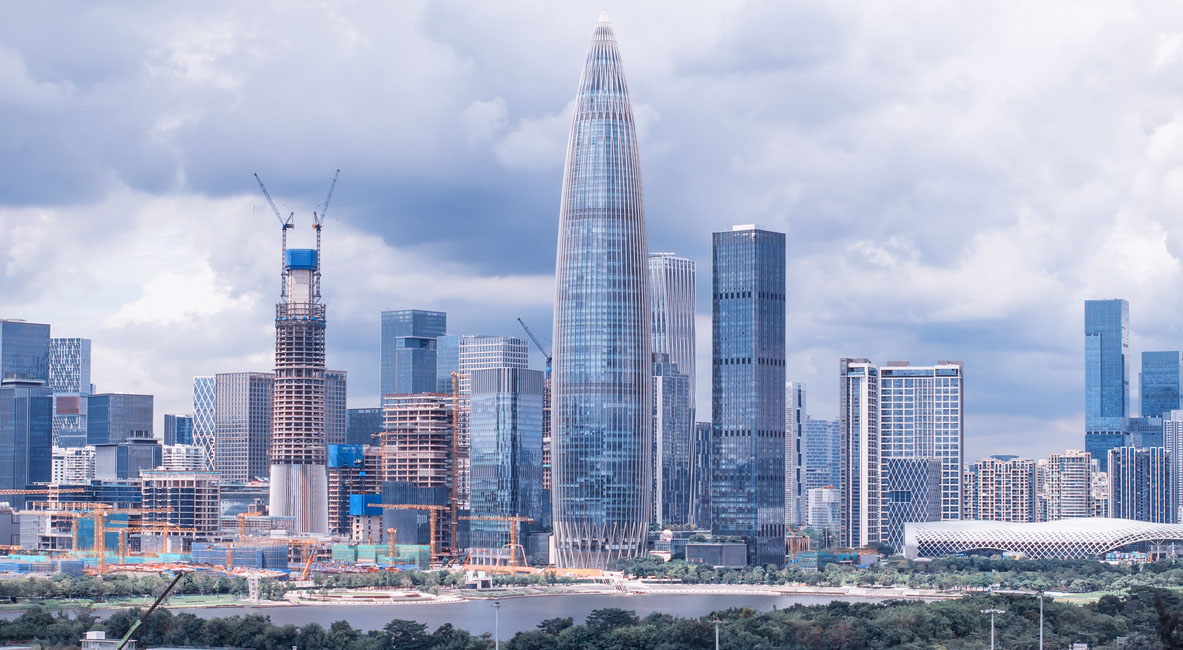
China’s Leap to Economic Recovery: Promoting high-quality development with comprehensive reforms
By Djoomart Otorbaev
Since China began opening up and reforming its economy some 45 years ago, GDP growth has averaged more than 9 percent a year and more than 800 million people have moved out of poverty. During the same period, there were also great improvements in education, health care, and other areas, demonstrating its enormous potential and economic resilience. In the current global economic context, the world is still coping with the impact of the ongoing epidemic, while unilateralism, protectionism, and geopolitical tensions have brought increased uncertainty to international trade and investment. Against this backdrop, global economic growth is struggling. Meanwhile, China is steadfastly overcoming obstacles and advancing its strategy of economic recovery and high-quality development. In 2023, China’s GDP exceeded RMB 126 trillion, up 5.2% from the previous year, and its contribution to world economic growth is expected to exceed 30%. This highlights the strong momentum of China’s economic recovery and shows that the drive for its development is becoming more and more irresistible. On the other hand, China’s different regions have significantly improved the business environment through the implementation of proactive reform measures, such as optimizing the administrative approval process, pursuing liberal market access policies, implementing tax and fee reduction measures, increasing financial support, and strengthening the protection of intellectual property rights. In 2023, 1.1 trillion yuan of foreign investment was attracted to China, which not only underscores foreign investment’s confidence in the sound foundation of China’s economy, but also demonstrates a firm bullishness on China’s potential for continued growth.
Behind China’s solid macroeconomic performance, regional development strategies have played a key role. The Beijing-Tianjin-Hebei region, the Yangtze River Delta (YRD), and the Greater Bay Area(GBA) have become important leaders in China’s efforts to achieve high-quality development. Guangdong Province and its GBA as a highland for economic innovation have, in particular, become the pilot demonstration zone for reforms. In possession of unique geographical advantages, a strong manufacturing base and an open economic system, the province has, in the tide of China’s national economic growth, not only contributed to the economic development of the region, but also provided an important impetus for national and global economic development. Under the circumstances, we will focus on the past and upcoming reforms in Guangdong Province and the Greater Bay Area, and explore the possibilities for its future development.
Guangdong Province, along with the Greater Bay Area, is an important part of China’s Pearl River Delta (PRD). This region has been instrumental in driving the country’s economic reforms and opening up for many years. The province is a testing ground for innovations and has successfully developed and implemented economic reforms.
The province’s importance to the development of the entire country was emphasized when President Xi Jinping made his fourth trip to the province last year. He called on the province to lead in promoting Chinese modernization, as it set the pace for the reform and opening up of the country. He also expressed his hope for foreign investors to increase their presence in Guangdong and the Greater Bay Area by continuing to explore and invest in the country.
During the late 1970s, Beijing established the first special export-oriented zones in the province, mainly financed by Chinese living abroad. Thanks to Hong Kong’s exceptional port logistics, robust financial sector and transparent legislation, the nearby town of Shenzhen gained straight access to new funding, technology, and resources that transformed the city, the province, and the entire country beyond recognition. The experiment with the decisive introduction of market institutions brought stunning results. Between 1979 and 2023, Shenzhen’s GDP grew more than 17 thousand times, from RMB 196 million to RMB 3.461 trillion (US$ 481 billion), surpassing the GDP of Hong Kong and Guangzhou. The once-poor fishing village now boasts the highest GDP per capita in the country.
The government plans to continue its reforms focusing on the Greater Bay Area, encompassing the province’s nine major cities and the special administrative regions of Hong Kong and Macau. Despite covering less than 1 percent of China’s land and housing only 4 percent of its population, the Bay Area contributes almost 10 percent to the nation’s GDP.
The central government has instructed the regional leadership of Guangdong Province to put more effort into transforming the Greater Bay Area into an international centre of excellence for innovation and technology. The Guangzhou-Shenzhen-Hong Kong-Macao innovation and technology corridor should become a strong magnet for attracting cross-border and regional talent, capital, information, technology, and big data to achieve this goal. This initiative will provide comprehensive support to international innovation and technology projects, science and technology events, and businesses interested in establishing research institutes and incubation centres for innovation.
Specific and high-priority projects include the Shenzhen-Hong Kong Science, Technology and Innovation Project in Hetao, and near the Shenzhen Development Zone adjacent to Hong Kong, and the Guangdong-Macao Deep Cooperation Zone in Hengqing, which is located in the Zhuhai Development Zone.
The authorities plan to enhance connectivity and build unique transport infrastructure in the Greater Bay Area. It is part of a long-term plan to integrate the densely populated south of Guangdong, Hong Kong, and Macau to transform it into a dynamic economic centre. According to China’s 14th Five-Year Plan, Guangdong’s railway network will surpass 5,000 km by 2025 with more than 1.6 trillion RMB investment. With that, the Greater Bay Area is expected to have a total length of railway tracks reaching 4,700 km.
A transportation link will connect Guangzhou East Railway Station, Guangzhou Railway Station and Guangzhou South Railway Station through high-speed highways. Trains on these routes will reach 200 km/h speeds, significantly reducing travel time. It will take just one hour to travel from Hong Kong’s West Kowloon Station to downtown Guangzhou.
A recent survey has revealed that 40 percent of respondents from Hong Kong intend to relocate or work in other cities within the Greater Bay Area. Experts predict that by 2028, the demand for office space in the region will reach around 21 million square meters. The territory’s successful integration will transform it into a unique business hub with no equivalent anywhere in the world.
Many well-known high-tech companies, such as Huawei, Tencent, and DJI, have headquarters in the Greater Bay Area, now called China’s Silicon Valley. Famous foreign companies such as Qualcomm, Microsoft and Intel have also set up R&D centers or research bases here. We believe the region can potentially become a real competitor to California’s Silicon Valley. However, much more work must be done to achieve this ambitious goal.
The area’s ability to attract local and international talent is crucial in achieving this. To accomplish this goal, it is vital to incorporate the English language into communication practices across all platforms, allocate significant resources towards strengthening the scientific and research capabilities of local universities and laboratories, foster an environment of open exchange, encourage scientific and cultural exchanges, develop modern energy and transport infrastructure, and establish smart city ecosystems. These are mandatory criteria for attracting capable youth. California has long been a magnet for young people worldwide, and the Greater Bay Area can and should become its most serious competitor by using the same principles to attract talent.
The outstanding achievements of Guangdong Province and the Greater Bay Area map the efficiency and speed of China’s modernization and high-quality development, and reflect the Chinese government’s strong determination and confidence in promoting its high-quality economic growth. China’s 2024 Report on the Work of the Government listed “striving to modernize the industrial system and developing new quality productive forces at a faster pace” as the first of the year’s ten key tasks. This is a move that underlines the great importance that the Chinese government attaches to economic reforms and a strategic direction that will be decisive for the success of the country’s overall development.
Djoomart Otorbaev is a former Prime Minister of the Kyrgyz Republic, a professor of the Belt and Road School of Beijing Normal University, and the author of the book “Central Asia’s Economic Rebirth in the Shadow of the New Great Game” (Routledge, 2023).
Photo: Shenzhen City central business district in Guangzhou, China (iStock)









